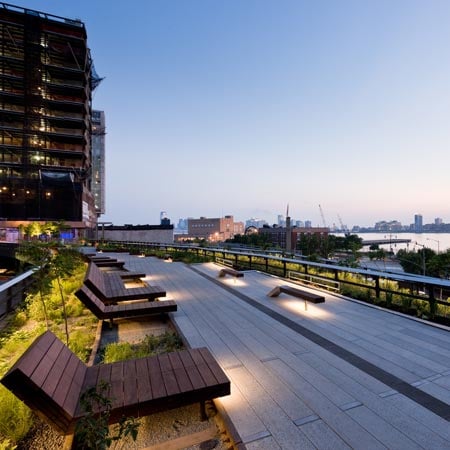Section 1 of the High Line, a 1.5 mile long park on an abandoned elevated railway, opened earlier this week in New York. Update 26/03/11: section two of the High Line has opened.
The winning proposal for a competition in 2004, the design is a redevelopment of an abandoned, elevated freight-railway that spans 22 blocks through the west side of Manhattan.
The High Line is designed by landscape designers James Corner Field Operations and architects Diller Scofidio + Renfro. Photographs are by Iwan Baan.
Here's text from James Corner Field Operations:
--
James Corner Field Operations led the winning design team for the 2004 international competition in collaboration with Diller Scofidio + Renfro, Piet Oudolf and many other expert specialists for the High Line, an unusual 1.45 mile long, abandoned elevated railway that spans 22 city blocks in between and through buildings and along the west side of Manhattan.
As the lead designer of the High Line, James Corner Field Operations has led all aspects of the project including design (from concept through construction), project management and coordination and construction administration.
Inspired by the melancholic, found beauty of the High Line, where nature has reclaimed a once-vital piece of urban infrastructure, the design team aims to refit this industrial conveyance into a post-industrial instrument of leisure.
By changing the rules of engagement between plant life and pedestrians, our strategy of agri-tecture combines organic and building materials into a blend of changing proportions that accommodates the wild, the cultivated, the intimate, and the hyper-social.
In stark contrast to the speed of Hudson River Park, the singular linear experience of the new High Line landscape is marked by slowness, distraction and an other-worldliness that preserves the strange, wild character of the High Line, yet doesn't underestimate its intended use and popularity as a public space.
This notion underpins the overall strategy the invention of a new paving and planting system that allows for various ratios of hard to soft surface that transition from high use areas (100% hard) to richly vegetated biotopes (100% soft), with a variety of experiential gradients in between.

